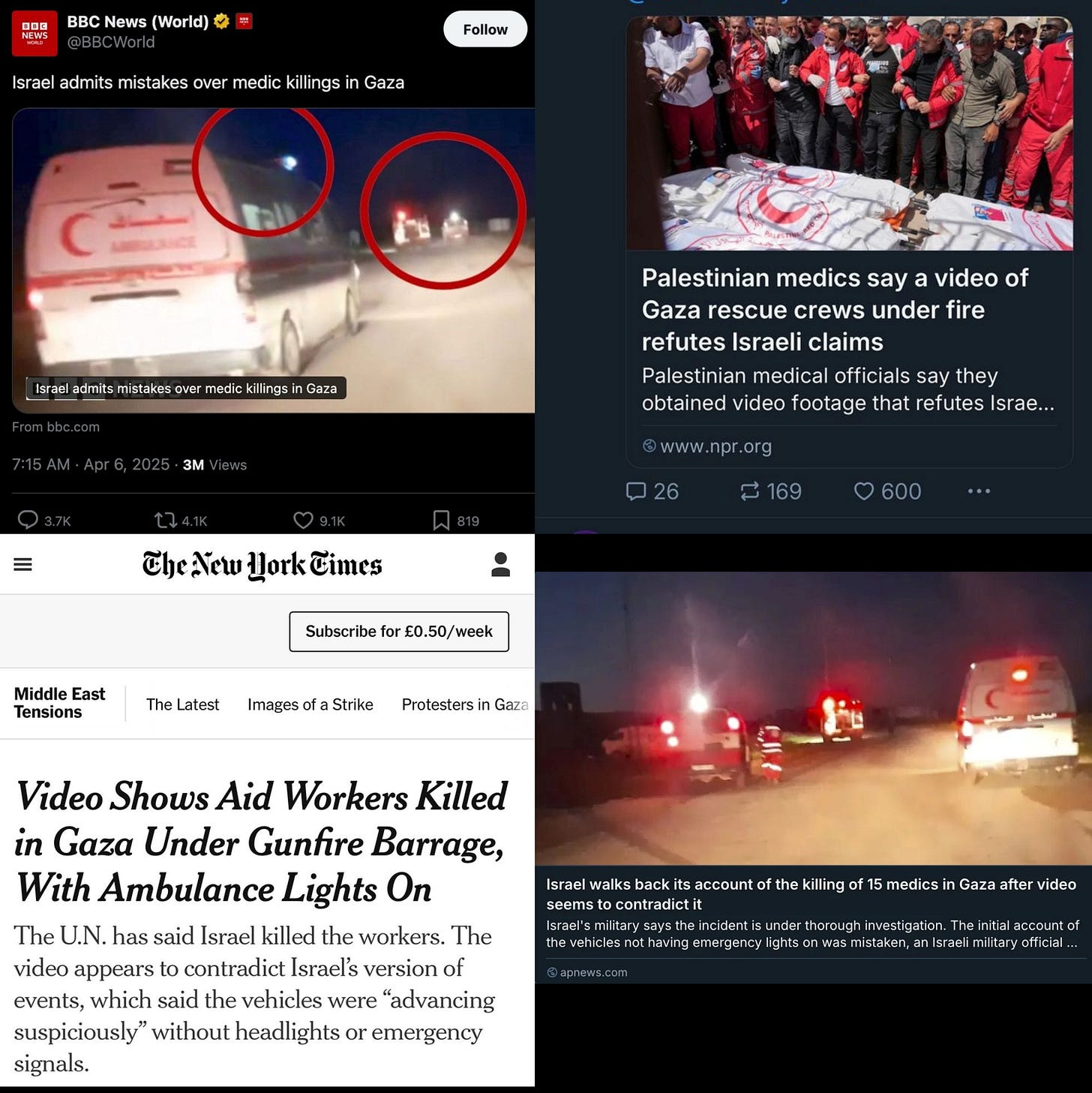How Media Outlets Covered Israel's Massacre of Palestinian Medics
A look at how the BBC, NPR, NYT and AP News covered Israel's execution of Palestinian rescue workers and medics in Gaza on 23 March 2025
I'm grateful that the post I did on how The BBC, The Times and The Guardian reported on the recent Le Pen news got a good amount of attention and positive feedback. I admit that I was nervous because I remain a migrant journalist and criticizing the big outlets is rarely good for one's career.
Keep reading with a 7-day free trial
Subscribe to Hauntologies by Elia Ayoub to keep reading this post and get 7 days of free access to the full post archives.


